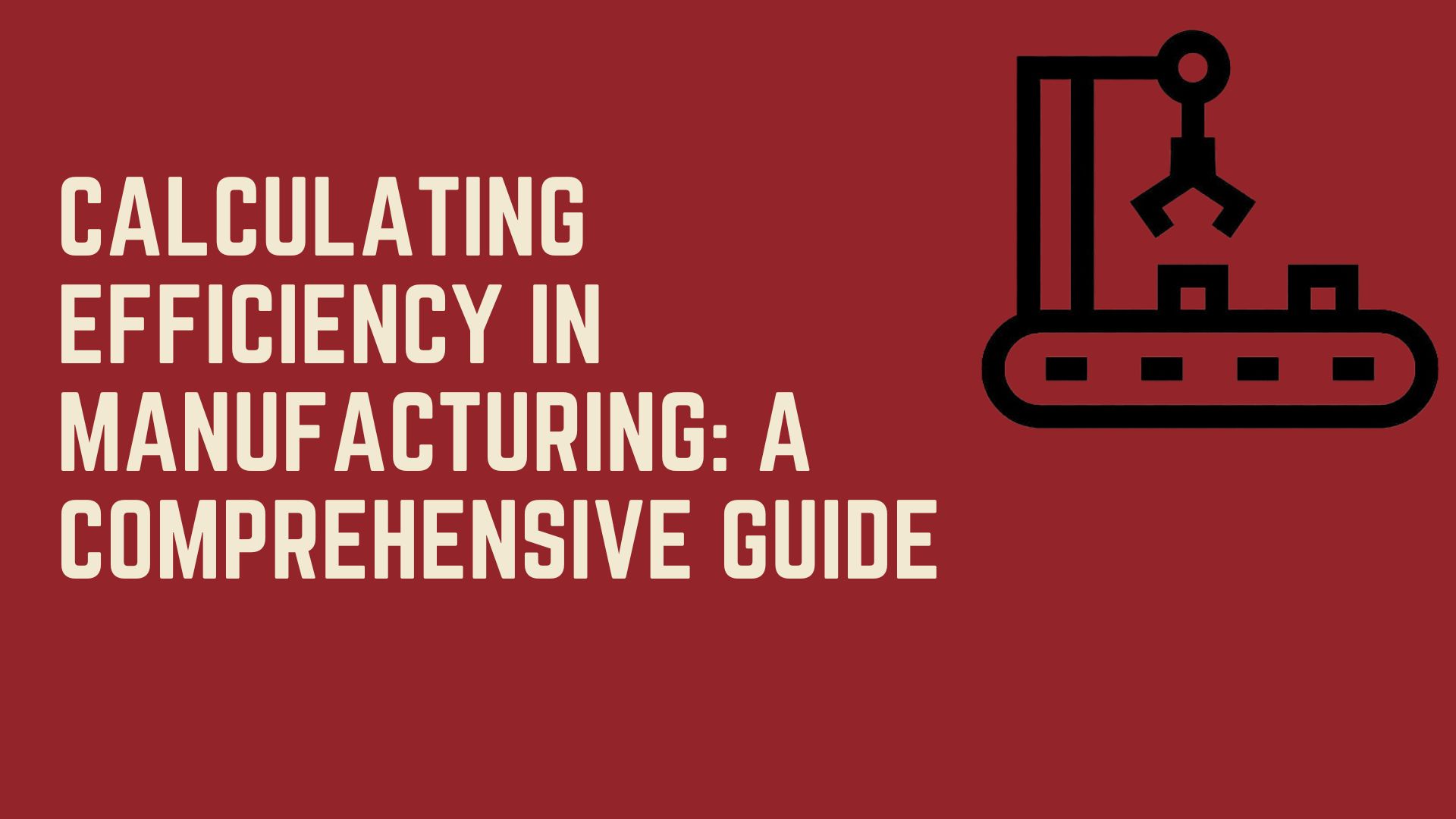In today’s competitive market, manufacturing efficiency isn’t just a buzzword—it’s a necessity. But what does “efficiency” really mean in the context of manufacturing, and how can you accurately measure it? In this blog, we’ll explore the multifaceted concept of manufacturing efficiency and provide a step-by-step guide to calculating and improving it in your operations.
Understanding Manufacturing Efficiency
Manufacturing efficiency refers to the extent to which production inputs (like materials, time, and labor) are being effectively converted into outputs (finished products). However, measuring this efficiency isn’t as straightforward as it seems, as it involves various factors including machine performance, labor productivity, and process flow.
Efficiency in manufacturing is typically quantified through metrics such as Overall Equipment Effectiveness (OEE), labor productivity, and production yield. By analyzing these metrics, manufacturers can identify areas of waste or inefficiency in their processes and implement targeted improvements.
Step 1: Measure Overall Equipment Effectiveness (OEE)
OEE is a holistic measure of the effectiveness of your manufacturing equipment. It is calculated by multiplying three factors:
- Availability: The ratio of running time to planned production time. It factors in downtime due to equipment failures, adjustments, or setup times.
- Performance: The speed at which products are manufactured compared to the machine’s theoretical maximum speed.
- Quality: The proportion of good units produced versus the total units started.
Step 2: Evaluate Labor Productivity
Labor productivity measures the output per labor hour. To calculate it, divide the total output (in units or monetary value) by the total labor hours invested in production. This metric helps identify how efficiently labor is being used and highlights potential issues like skill gaps or inefficiencies in labor deployment.
Step 3: Assess Production Yield
Production yield measures the efficiency of the production process itself. Calculate it by dividing the number of good units produced by the total units started (including those that were scrapped or reworked). A high yield rate indicates a smooth, effective manufacturing process, while a low rate may point to quality issues or inefficiencies in the production line.
Implementing Efficiency Improvements
Once you’ve calculated these metrics, the next step is to identify and implement improvements. Here are some strategies:
- Reduce Downtime: Analyze downtime causes and implement preventive maintenance schedules or faster changeover techniques.
- Enhance Performance: Optimize machine settings, reduce bottlenecks, and ensure machines are operating at their optimal speed.
- Improve Quality: Implement quality control measures at every stage of the production process to reduce defects and reworks.
Continuous Improvement and Technology Integration
Efficiency isn’t a one-time goal; it’s a continuous journey. Encourage a culture of continuous improvement where employees at all levels are engaged in identifying inefficiencies and suggesting improvements. Additionally, leverage technology such as automation, IoT (Internet of Things), and AI (Artificial Intelligence) to gather real-time data, monitor performance, and make informed decisions.
Conclusion
Measuring and improving manufacturing efficiency is crucial for staying competitive and profitable. By understanding and applying metrics like OEE, labor productivity, and production yield, you can gain insights into your operations and drive substantial improvements. Remember, the key to success is not just in measuring but in the continuous pursuit of excellence through systematic analysis, targeted actions, and leveraging technology.
In the quest for manufacturing efficiency, knowledge is power, and action is the engine of change. Start measuring, start analyzing, and most importantly, start improving today.









